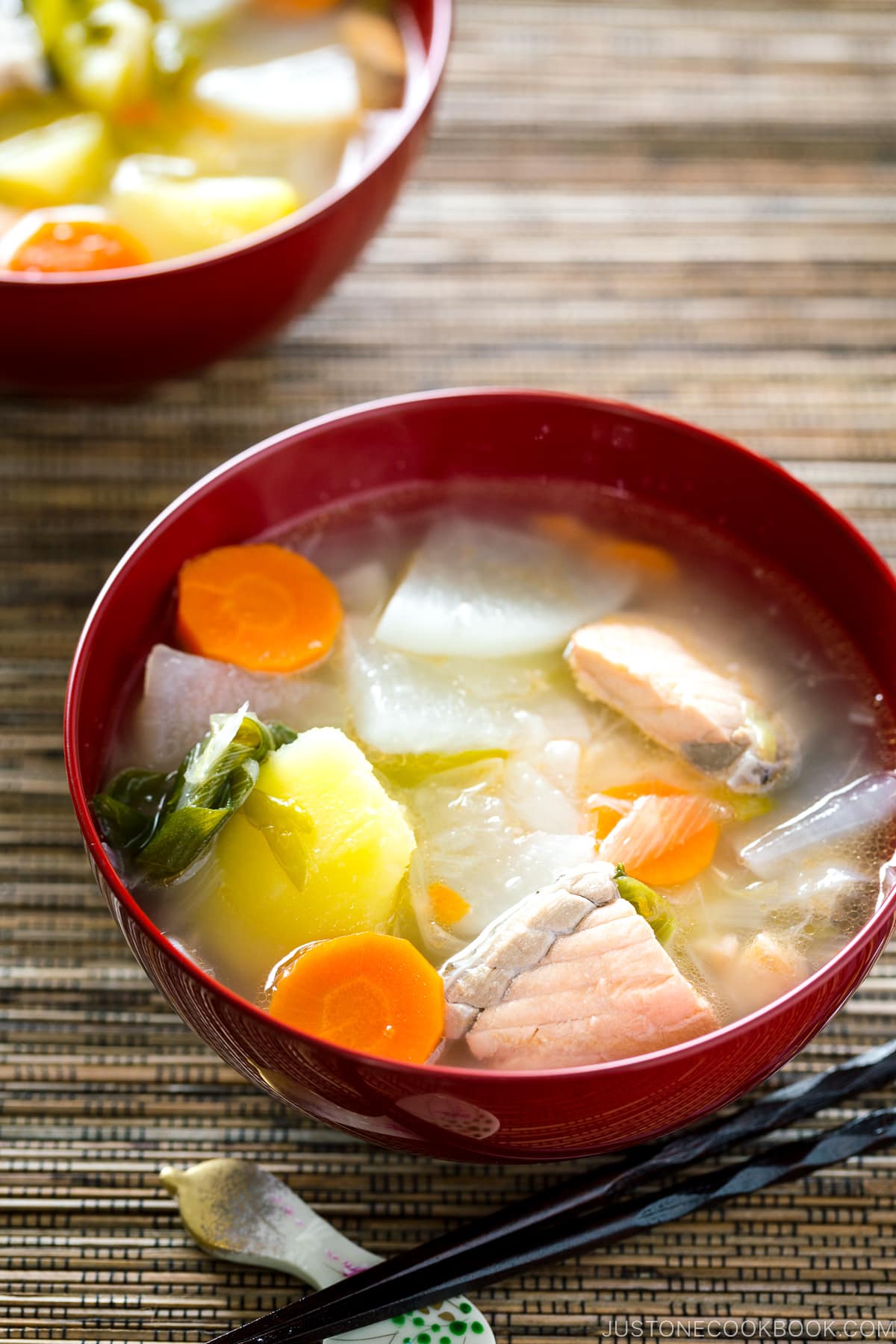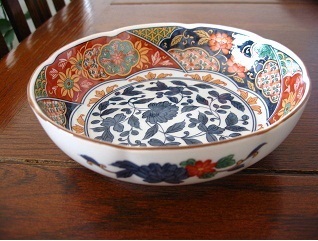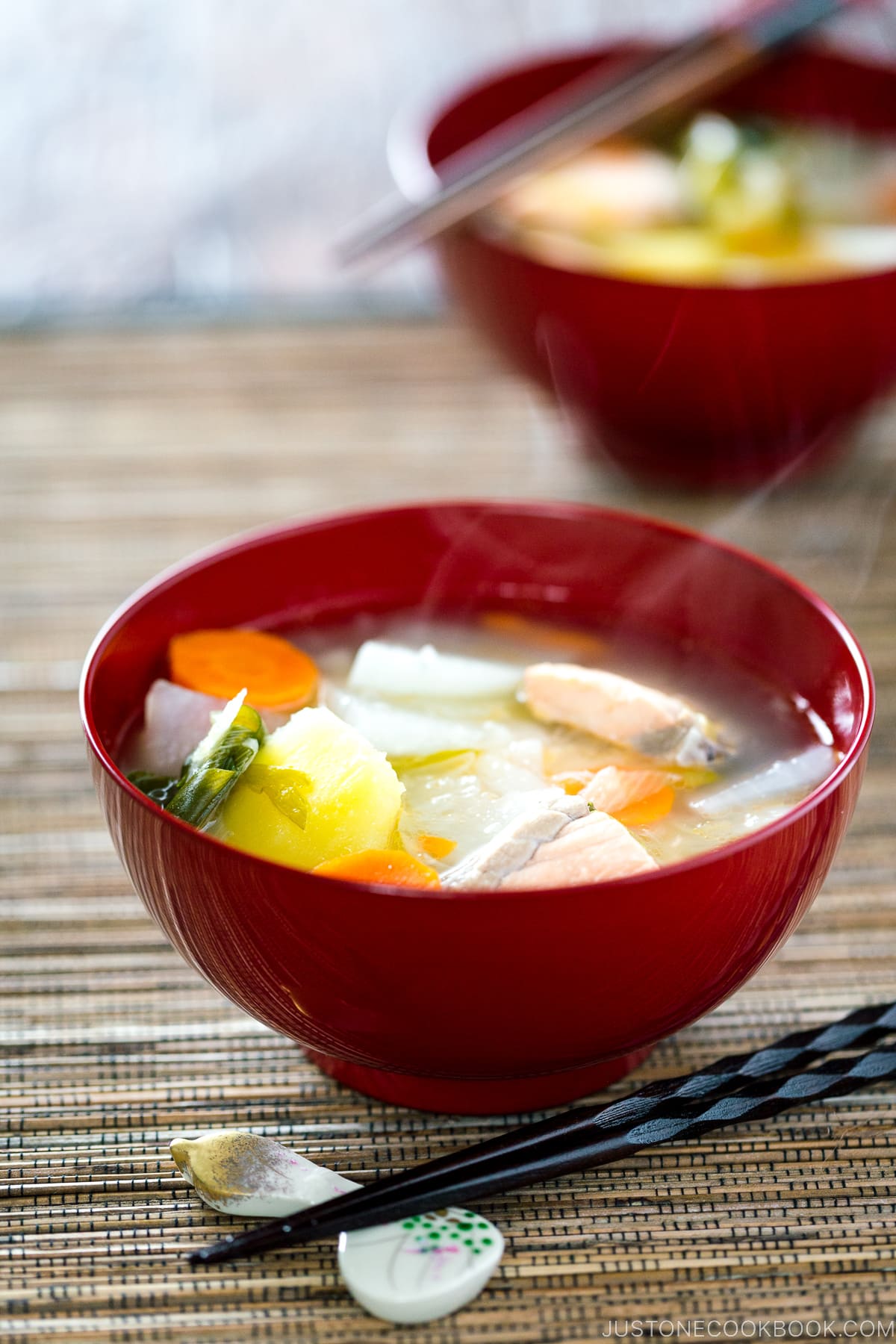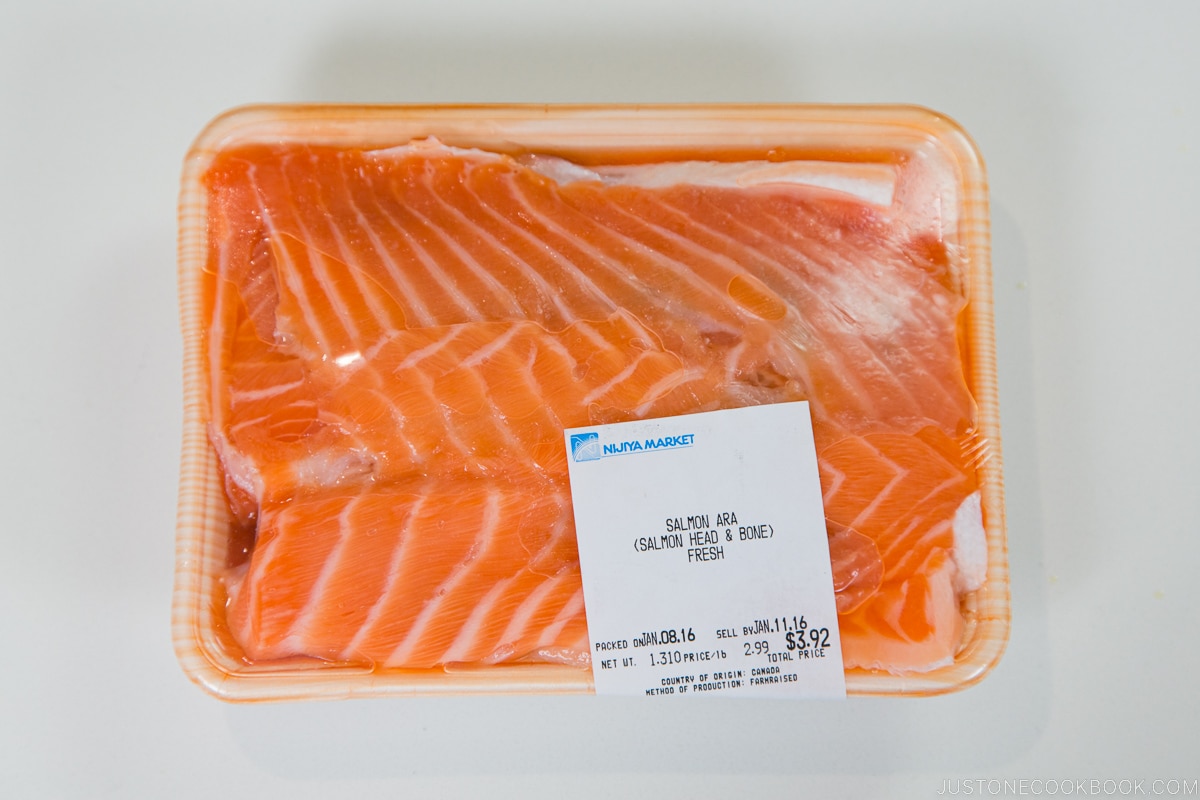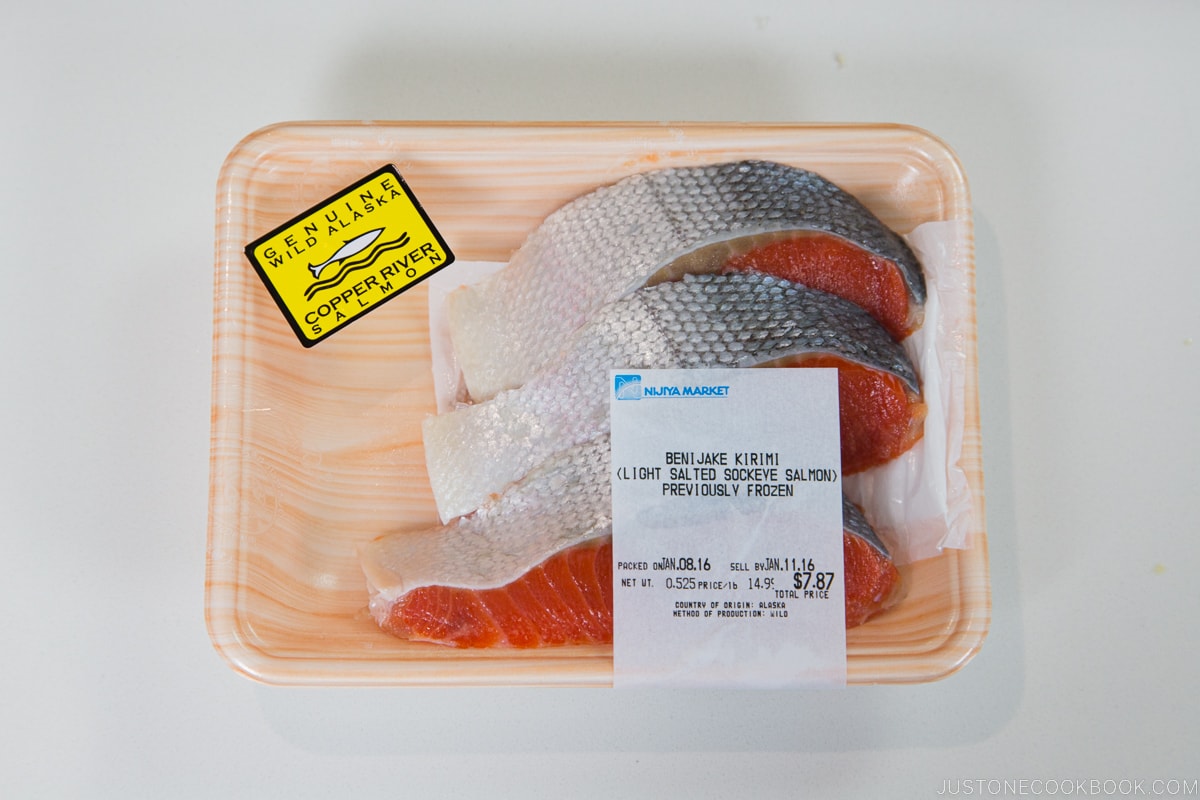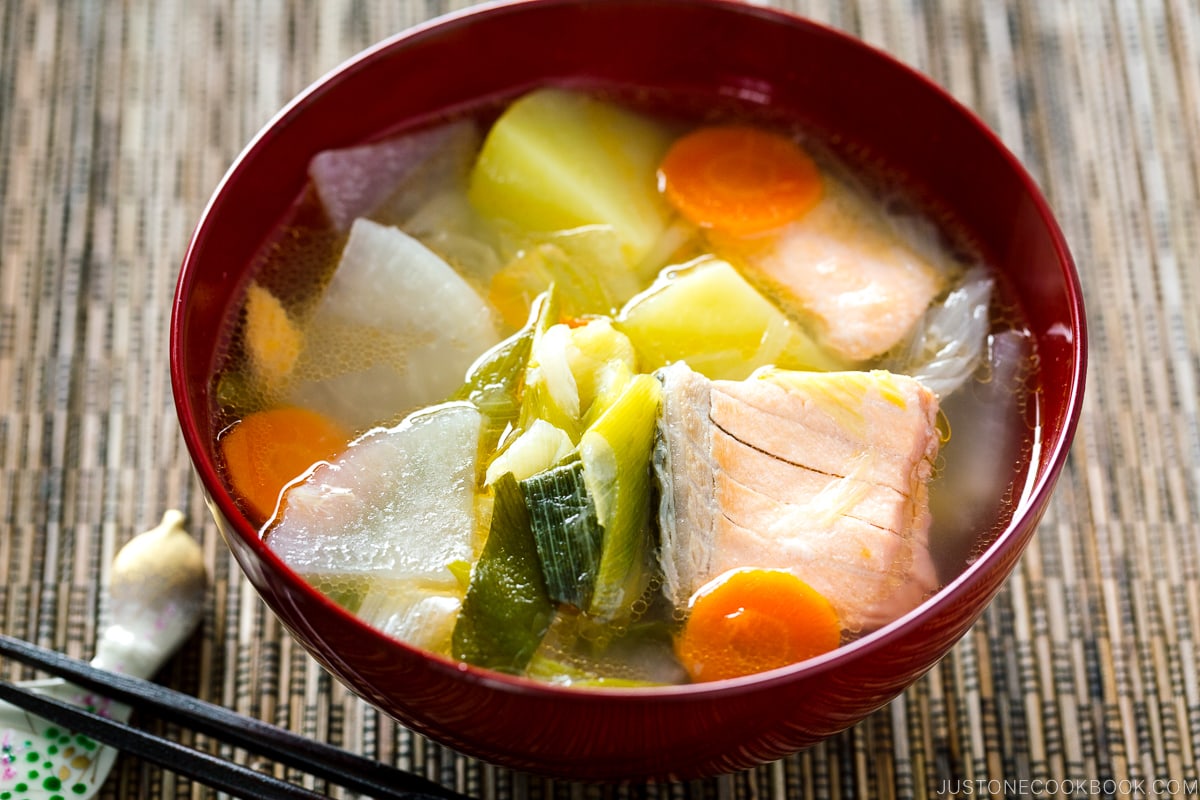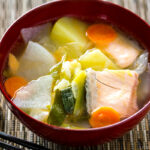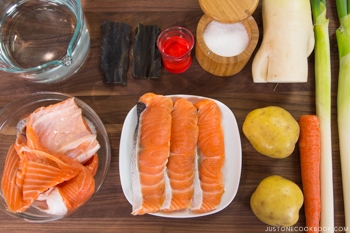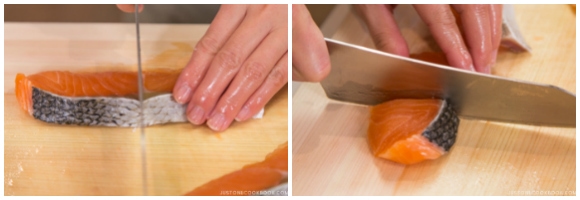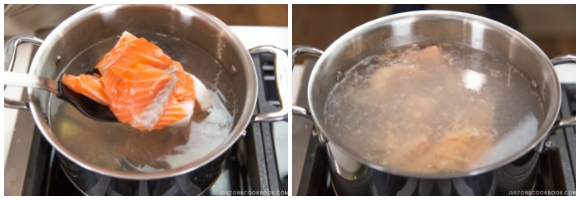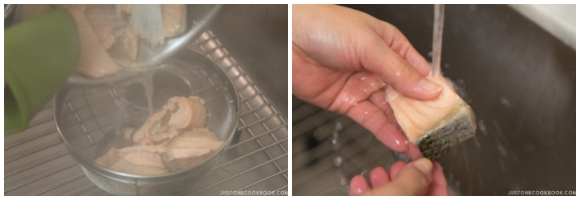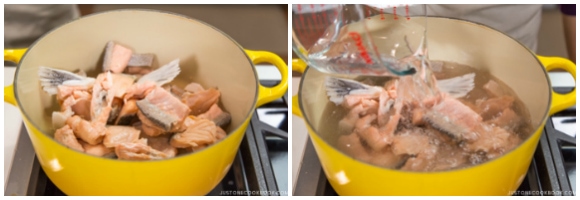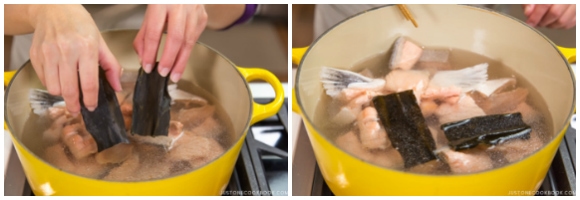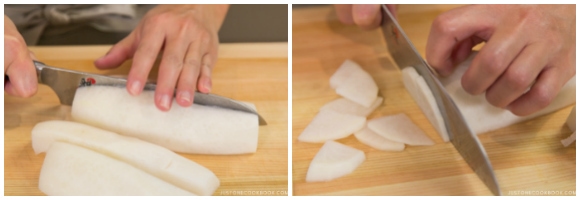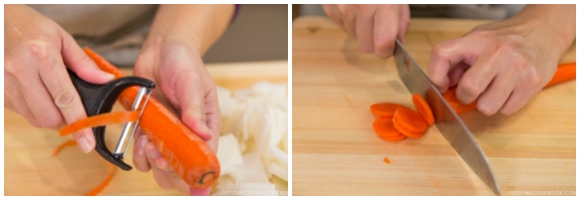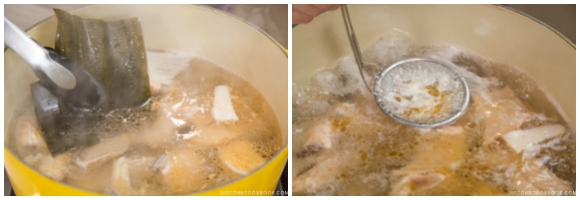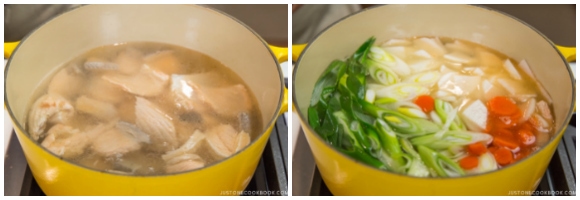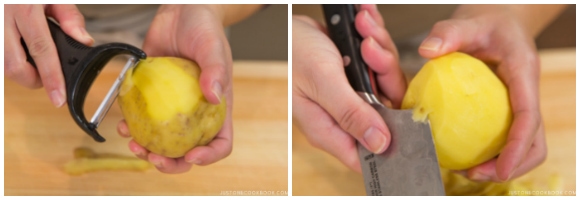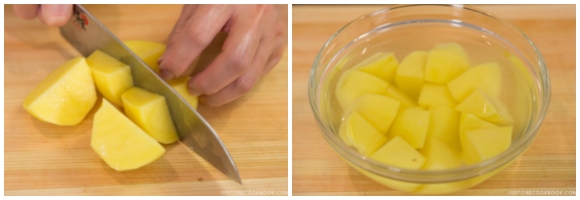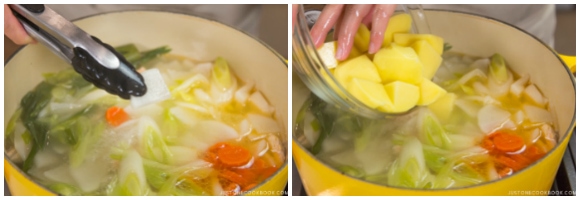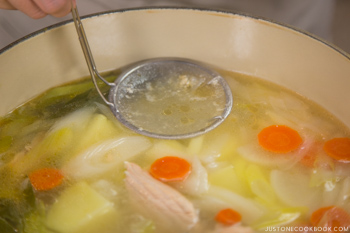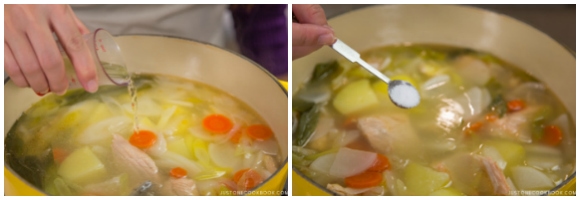If’ you had a chance to visit the northernmost island of Japan, Hokkaido (北海道), did you try the popular regional salmon soup called Sanpeijiru (三平汁)? I’ve had it several times during my visit and it is fabulous! As many of you know, winter in Hokkaido is very cold and a bowl of piping hot soup with salmon is a great way to keep yourself warm.
What is Sanpeijiru?
Sanpeijiru is a salt-flavor-based soup popular in Hokkaido, and it is enjoyed at both home and restaurants. I love ordering this soup at sushi restaurants whenever I visit Hokkaido. Hokkaido is known for its delicious salmon and potatoes. For this recipe, salmon, potatoes, daikon radish, carrot, and Negi (leeks/scallion) are cooked in kombu dashi broth. Some people put Konnyaku (Konjac) and other root vegetables in the recipe as well. Also, herring, cod, or Hokke (Okhotsk atka mackerel) are sometimes used instead of salmon, but I haven’t had a chance to try the soup with other fish besides salmon.
Origin of the Name – Sanpeijiru
For a regional recipe like this, I try to share a little bit of background story with the recipe. If you’re wondering about the origin of this recipe name, there are 3 theories about where it came from. First of all, jiru (汁) in Japanese means “soup”. Sanpei (三平) is a pretty common name for males back in the samurai days. No one knows which theory is true, but the interesting fact is that all these theories came from the late Edo period, which means Sanpeijiru has been around for over 200 years.
Difference between Sanpeijiru and Ishikari Nabe
If you’re familiar with Hokkaido’s regional foods, you might realize that Sanpeijiru is very similar to another of Hokkaido’s popular dishes, Ishikari Nabe (石狩鍋). Here is a quick glance at the differences: Sanpeijiru
It’s soup. The main ingredients are salmon scraps (bones, belly, head, etc). You can add Salted Salmon (塩鮭), but it is optional. Besides salmon, herring, cod, or hokke are used. The soup is usually salt flavor and seasoned with sake and salt only. Serve as the main dish or as a replacement for miso soup (which means to accompany rice and the main dish).
Ishikari Nabe
It’s a hot pot (nabe). Use raw salmon (生鮭). The hot pot broth is a miso flavor. The hot pot ingredients include salmon scraps, tofu, onion, cabbage, potatoes, daikon radish, shiitake mushrooms, carrots, and long green onion (Tokyo negi). Some add sake lees, butter, and milk (dairy is Hokkaido’s top produce). Sprinkle sansho powder to enjoy.
Cooking with Salmon Scraps
For many fish in Japan, the Japanese eat all parts of the fish from the head, the skin, and of course the meat. Salmon is one of these fish that we can use entire fish for cooking. If you purchase or catch a whole salmon, this recipe is a wonderful way to enjoy salmon scraps (as I said earlier, those are the main ingredients for this soup!). For those of you who don’t fish or deal with fish, go to a reputable fishmonger and ask for salmon scraps or sometimes called “fish chowder” as they usually keep them in the back. Japanese grocery stores also sell salmon scraps, so look for a package that says “Ara” (あら) or “Kiriotoshi” (切り落とし). If you can’t find salmon scraps, use salmon fillet; but remember, you need to use Salted Salmon instead of raw salmon. You can make it yourself (My recipe here) or buy one from Japanese grocery stores. The package should say “salted” salmon. Back to salmon scraps. Salmon is very delicious, but remember that oil from salmon is quite smelly and you definitely don’t want that in your soup. My mom (who taught me this recipe) pour boiling water over the salmon to remove the fishy smell and some of the saltiness. However, when I did the same method with the salmon I got in the US, the final soup still had a strong fishy taste. Instead, I decided to blanch the salmon for 30 seconds and it worked perfectly. There is no strong fishy smell in the soup! I hope this tip is helpful when you make your soup!
Other Delicious Soup Recipes
16 Cozy and Nutritious Japanese Soups to Make at Home Tonjiru (Japanese Pork and Vegetable Miso Soup) Japanese Glass Noodle Soup (Harusame Soup) Cold Miso Soup (Hiyajiru)
Wish to learn more about Japanese cooking? Sign up for our free newsletter to receive cooking tips & recipe updates! And stay in touch with me on Facebook, Pinterest, YouTube, and Instagram.
